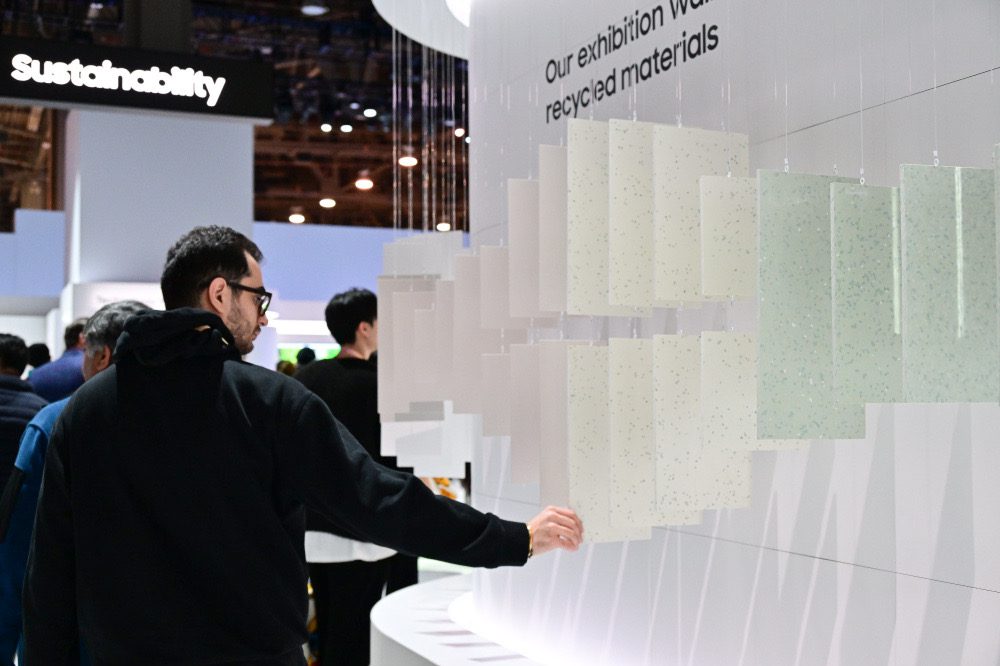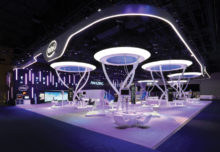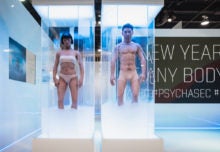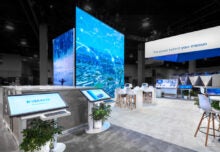Questions about sustainability in booth design often trigger two responses: We’ve been doing it for a while (aluminum structures, rentals, recycling carpet) and Clients don’t want to pay for it. Both of those are true—sometimes—but as companies of all sizes adopt the 2050 net zero climate goals to cut greenhouse gas emissions, they’re starting to take real steps across their events and exhibits.
 YOU MIGHT ALSO LIKE:
YOU MIGHT ALSO LIKE:
- Three Ways Community Activities Can Bolster Event Marketing Campaigns
- Exhibit Design: Intel Merges AI and Live Music at AWS re:Invent
How is the industry moving forward? Cue in several wide-reaching initiatives and credible action on the show floor. Take Informa Markets’ Better Stands initiative aimed at eliminating single-use booth structures and adopting the use of recycled or reused materials for floor coverings and signage. The resulting recommendations on sustainable booth design are due later this year. Events Industry Council offers certification and sustainable event standards that cover every aspect from destination to materials.
Here, we explore trending sustainability news and ideas for corporate trade show marketers:
Sustainability Driving Campaigns
This year’s CES theme explored stories about green innovations, which led to companies dedicating substantial square footage to their own sustainability stories, green products and partnerships.
The sprawling Samsung exhibit’s entry point was through a Sustainability Zone that, along with the company’s environmental strategy, showcased the materials made using recycled Styrofoam from the brand’s packaging and by-products of the production of household goods that found a new life as the walls of its exhibit. Considering the size of its footprint and the enclosed design, it was a lot of wall space constructed from recycled material. Brands also used this platform to launch new campaigns and policies, as Google did with its Right to Repair movement announced at the show.
At the GCSAA Conference and Trade Show in Phoenix (Jan. 30 to Feb. 1) four major golf associations collaborated to demonstrate the golf industry’s “commitment to sustainability” through a Sustainability Showcase, that featured “exhibits and displays highlighting research, innovation, technology and best practices, and storytellers.”
Circularity Dominates the Conversation
Circularity is the new recycling, an all-encompassing approach that incorporates a few new keywords and steps outside of reduce, reuse, recycle, and they include remanufacturing, refurbishing, reselling, and rebuilding.
Smart Meetings reports that The NPE: The Plastics Show this May plans to host an indoor/outdoor, 10,500-net-square-foot recycling center that will feature live demos, a Circularity Hub, recycling and sustainability zones for exhibitors, and a Sustainability Stage with more than 25 speakers highlighting solutions.
New Sustainable Materials in Exhibits
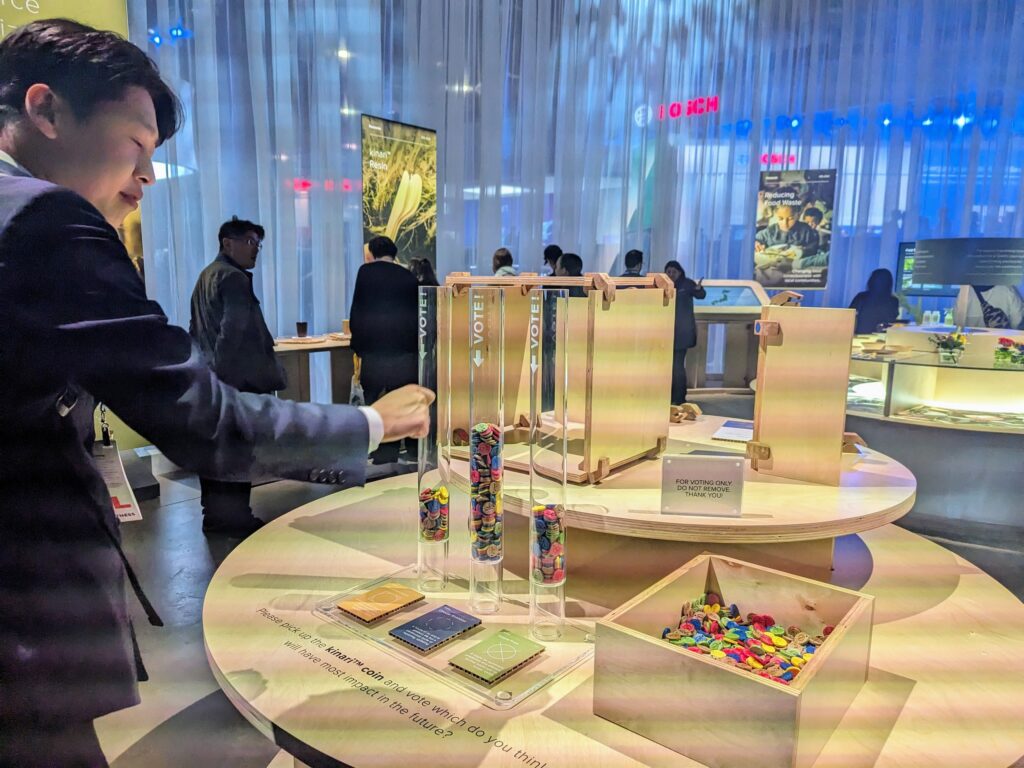
Panasonic’s exhibit at CES 2024.
To deliver the message of sustainability at CES 2024, Panasonic Group replaced hard walls with translucent draped fabric and did away with carpet, but arguably the most innovative part of the exhibit was the use of kinari, the brand’s proprietary sustainable resin made from plant-based cellulose fiber. A prominent part of the brand’s activation was devoted to showcasing the kinari joint system used in the exhibit in place of regular plastic parts and clips in various parts, including pedestals and interactives. Attendees could also vote, using kinari coins, on the concepts they believe would impact a sustainable future most. Decarbonization? Circular economy? Waste-free? The tactile touchpoint was surprisingly popular in the sea of high-tech engagement.
Also investing in proprietary substrates, Sony opted to build the information panels in its booth from “Original Blended Material,” a proprietary blend made from bamboo, sugar cane, and post-consumer recycled paper, whose origins are specified.
Offsetting Carbon Footprint
Measuring carbon footprint is gaining ground within the trade show industry as well as among individual exhibitors. Travel and transport continue to be the highest cause of event emissions globally. To help calculate that, the Colorado Convention Center, for example, offers an Event Attendee GHG Emissions Calculator for attending a trade show as well as solutions and ideas to reduce them and offset them with carbon credits.
Venues can also be massive consumers of energy so many are adopting a variety of carbon impact measurement tools, such as TRACE by isla, WeTrack and nZero, and can make near-real-time information available to show organizers and exhibitors. Some, such as the Greater Columbus Convention Center, purchase Renewable Energy Credits (RECs) to offset their electricity usage. Hawaii Convention Center offers a carbon offset program where trade show participants can select and plant endemic trees, and have already planted over 500,000 trees in Oahu.
Giveaways for a Cause
“Gone are the days of the stress ball you found on the trade show floor. It just doesn’t make sense,” said Dan Preiss, vp-experiential marketing at Dell Technologies, on a recent episode of EM’s Event Peeps podcast.
Is there an eco-friendly way? Depends on the brand’s overall strategy. At CES and NRF Expo, complimentary cups of delicious coffee (and even steak bites and s’mores) felt valuable and left a good taste in the mouth, literally. But it appears the plantable giveaway trend is still growing strong.
Togg’s “Digital Mobility Garden” at CES allowed attendees to choose between planting European black pine or Calabrian pine seeds. While at HIMSS this month, we saw giveaways of full, plantable tree saplings in pretty cylindrical boxes.
And here’s an idea from the activation world: At the recent Arnold Palmer Invitational, Mastercard cardholders received a commemorative pin and plantable wristband embedded with wildflower seeds so that post-tournament, they could give the wristband a second life—and get this, it was spritzed with the brand’s signature scent. Priceless, indeed.


